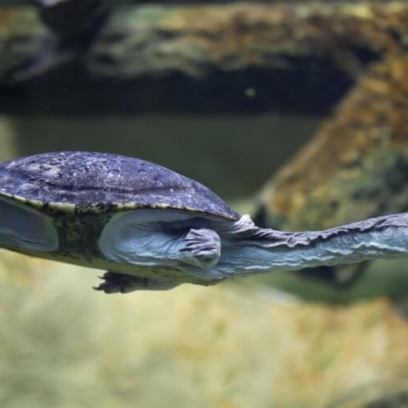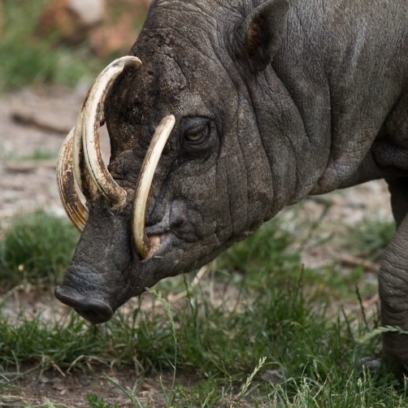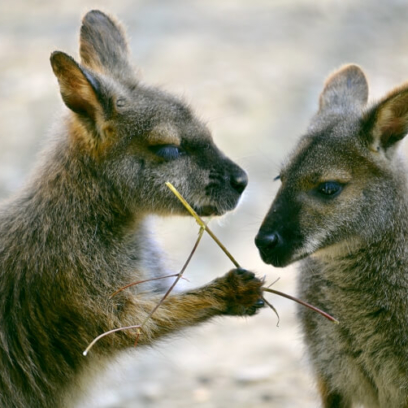Matschie’s Tree Kangaroo
Dendrolagus matschieiIsn’t it Wild? They can make tree-to-tree jumps of 30-45 feet.
There’s More to the Story Unlike their kangaroo relatives, tree kangaroos spend nearly all their lives in trees. Well-adapted for life in the forest canopy these small arboreal marsupials are built for climbing. With powerful limbs, long-gripping claws, and a long tail for balance, they can easily maneuver from branch to branch. Despite their impressive abilities, they spend 60% of their time sleeping. Although there are 14 species of tree kangaroos, RWPZ is home to several Matschie’s tree kangaroos – Morobe, La Roo, Keweng, Ren and Paia. Topping out around 22 pounds, this mighty little mammal is recognizable by its deep red and cream coloring. This thick fur works to insulate them against damp weather and act as camouflage protection against predators.

Native to the mountainous rainforests of Papua New Guinea, this critically endangered species needs our help. Roger Williams Park Zoo has long supported wildlife and habitat conservation programs to help this threatened species survive including a close partnership with the AZA Tree Kangaroo Species Survival Plan (SSP) breeding program and the Tree Kangaroo SAFE program that links community-based conservation initiatives in Papua New Guinea with the efforts and support of AZA members and partners.
Details
Height: 1.5 – 3 ft.
Weight: 15 lbs.
browser diet, sweet potatoes, apples, broccoli, bananas, grapes, celery
mountainous rainforests of the Huon Peninsula of Papau New Guinea and the nearby island of Umboi
Endangered
World of Adaptations
Exhibit information
Come explore a World of Adaptations! Animals face numerous challenges in the natural world such as finding shelter and enough food, avoiding predators, and finding mates. However, they have developed adaptations that increase their chances of survival. Adaptations can be physical; the tail of the wallaby helps it balance and change direction as it hops. Adaptations can also be behavioral; gibbons vocalize in the morning to announce their presence to other animals in the area. They can also be a combination of things such as a Komodo dragon’s impressive teeth, sharp claws, and deadly venom. Come and explore a World of Adaptations and see and hear the adaptations of these fascinating creatures including Elsie, the only Komodo dragon at any zoo in New England.




